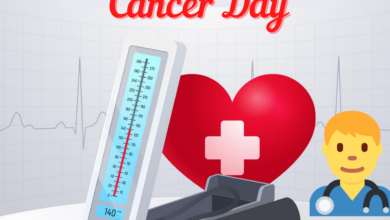In Vitro Fertilization (IVF) in Canada: All you need to know

In vitro fertilization (IVF) is a complex series of procedures that let fertilization happen outside the woman’s body. During the Vitro Fertilization process, mature eggs are collected from ovaries and placed in a laboratory where eggs are fertilized by sperm. Then the fertilized egg (embryo) or eggs (embryos) are placed back in the woman’s uterus. If the embryo implants in the uterus, the woman gets pregnant. IVF is the most effective form of medical procedure to achieve pregnancy. It can be done by using a couple’s own egg and sperm or it can involve eggs, sperm or embryos from an unknown and anonymous donor. One full cycle of IVF takes about three weeks.
Chances of having a healthy baby using IVF depends upon many factors such as your age and causes of infertility. IVF increases the chances of pregnancy but it can be time-consuming, expensive and invasive too. In case more than one embryo is placed in the woman’s uterus, IVF can result in multiple pregnancies.
Also Read: 5 Helpful Ways to Get Relief from Muscle Cramps
Should IVF be preferred over other available options?
IVF is the most effective form of Assisted Reproductive Technology (ART) and is used to treat infertility problems. There are also some less invasive treatment options available that a couple might try before attempting IVF such as fertility drugs and intrauterine insemination. Fertility drugs help in increasing the production of eggs and intrauterine insemination is a procedure in which sperm are placed directly in the uterus near the time of ovulation.
Sometimes IVF is preferred for infertility over other available options for women over age 40.
IVF can be a good option if you or your partner has certain health conditions which include:
- Fallopian tube damage or blockage – It becomes difficult for an egg to be fertilized if there is damage or blockage in the fallopian tube. It becomes difficult for an embryo to travel to the uterus due to blockage in the fallopian tube.
- Ovulation disorders – Fewer eggs are available for fertilization due to the infrequency of ovulation.
- Uterine fibroids – Fibroids are common benign tumours in women in their 30s and 40s. Fibroids can prevent implantation of the fertilized eggs.
- Previous tubal sterilization or removal – In the tubal sterilization process, fallopian tubes are cut or blocked to permanently prevent the pregnancy. If you want to have a baby after tubal ligation, IVF may be an effective alternative to tubal ligation reversal surgery.
- Unexplained infertility – If no cause for infertility has been found, IVF can be suggested to the couple.
- Fertility preservation for cancer or other health conditions – If you are going through cancer treatment such as radiation or chemotherapy, that may harm your fertility, IVF for fertility preservation can be an option. To preserve fertility, eggs are kept frozen in an unfertilized state for later use. Fertilized eggs as embryos can also be kept frozen for future use.
Also Read: The Invisalign Adolescent Program For Orthodontics
Women who have a non-functional uterus or for whom pregnancy might cause a serious health risk can choose IVF.
Risks associated with IVF – In Vitro Fertilization increase the chances of pregnancy but there are some complications too in the procedure of IVF. These risks include:
- Multiple births – IVF increases the chances of multiple births if more than one embryo is placed back in the uterus after fertilization. A pregnancy with multiple fetuses is riskier and causes an early labour, low birth weight and unhealthy babies.
- Premature delivery and low birth weight – Research shows that IVF increases the risk of premature delivery or causes low birth weight.
- Ovarian hyperstimulation syndrome – Injectable fertility drugs, such as human chorionic gonadotropin (HCG) are used in the IVF procedure to induce ovulation this can cause Ovarian hyperstimulation syndrome in which women’s ovary become swollen and painful. Women can have mild abdominal pain, bloating, nausea, vomiting and diarrhoea which typically last a week. If pregnancy happens, these symptoms might last several weeks. It may develop a more severe form of ovarian hyperstimulation syndrome that causes Rapid weight gain and shortness of breath.
- Miscarriage – The rate of miscarriage in women who conceive through IVF is about 15% to 25%, similar to those who conceived naturally. But the rate of miscarriage increases with maternal age.
- Egg-retrieval procedure complications – An aspirating needle is used for collecting the eggs. The use of this needle can cause bleeding, infection or damage to the bowel, bladder or blood vessel.
- Ectopic pregnancy – An ectopic pregnancy occurs when the fertilized egg implants in a location other than the uterus, usually in the fallopian tube. About 2% to 5% of women who uses IVF for pregnancy can have chances of ectopic pregnancy. The fertilized eggs cannot grow outside the uterus and there is no way to conceive. Ectopic pregnancy can become life-threatening if not detected early.
- Stress – If you have decided to use IVF, it can drain you emotionally, physically and financially. The cost of IVF in Canada is higher and out of range for many couples. There is no guarantee that it will be successful. However, it significantly increases the chances of pregnancy. Couples need support from their Counselor, family and friends in the ups and downs of IVF treatment.
The success rate of IVF depends upon maternal age. With increasing maternal age, the success rate starts decreasing. Women aged under 35, have a success rate of 41%.
For couples who can not conceive naturally due to certain health conditions, IVF can prove to be a boon for them if treated properly. There are also other options available. Consult with your physician and they will tell you the best option according to your health report. Talk to your doctor and understand every aspect of IVF such as the process and complications. Do not hesitate to ask if you have any doubt.











